Showing Spotlights 17 - 24 of 240 in category All (newest first):
 Researchers demonstrate first 3D printed nanoengineered hydrogel electronic skin able to simultaneously and sensitively monitor dynamic changes in mechanical strain, pressure, and temperature comparable to natural human skin.
Researchers demonstrate first 3D printed nanoengineered hydrogel electronic skin able to simultaneously and sensitively monitor dynamic changes in mechanical strain, pressure, and temperature comparable to natural human skin.
Jan 18th, 2024
 Combining pH nanosensors and super-resolution microscopy illuminates transient signaling between cellular organelles, unlocking new vistas for diagnosing and manipulating inter-organelle crosstalk.
Combining pH nanosensors and super-resolution microscopy illuminates transient signaling between cellular organelles, unlocking new vistas for diagnosing and manipulating inter-organelle crosstalk.
Jan 5th, 2024
 Nanofabrication and IoT reshape agriculture with advanced sensor technologies, addressing integration challenges and enhancing sustainable farming methods.
Nanofabrication and IoT reshape agriculture with advanced sensor technologies, addressing integration challenges and enhancing sustainable farming methods.
Dec 26th, 2023
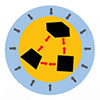 Novel technique produces nanometer-scale functionalized MXene films for high-performance gas sensors. Modular assembly significantly enhances sensitivity, selectivity, and stability over pristine MXenes. Insights into interplay between surface ligand engineering and structure-property relationships.
Novel technique produces nanometer-scale functionalized MXene films for high-performance gas sensors. Modular assembly significantly enhances sensitivity, selectivity, and stability over pristine MXenes. Insights into interplay between surface ligand engineering and structure-property relationships.
Dec 20th, 2023
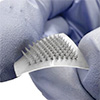 A flexible polymer patch studded with hollow microneedles painlessly penetrates skin to sample interstitial fluid for wireless, on-demand diabetes monitoring.
A flexible polymer patch studded with hollow microneedles painlessly penetrates skin to sample interstitial fluid for wireless, on-demand diabetes monitoring.
Dec 12th, 2023
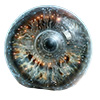 Leveraging soft electronics and organic-inorganic materials, researchers create a durable artificial retina wrapped around a fiber exhibiting striking similarities to biological vision. This advance opens the door to sensory-enhancing wearable technologies.
Leveraging soft electronics and organic-inorganic materials, researchers create a durable artificial retina wrapped around a fiber exhibiting striking similarities to biological vision. This advance opens the door to sensory-enhancing wearable technologies.
Dec 7th, 2023
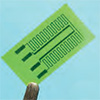 Researchers develop flexible electronic sensor skins with extreme resilience that maintains accurate strain and temperature measurements when submerged in harsh acids or swung between scorching heat and subzero icy seawater.
Researchers develop flexible electronic sensor skins with extreme resilience that maintains accurate strain and temperature measurements when submerged in harsh acids or swung between scorching heat and subzero icy seawater.
Nov 27th, 2023
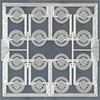 Researchers have created a soft artificial skin with liquid metal sensors that mimics human perception of softness and consistency across objects.
Researchers have created a soft artificial skin with liquid metal sensors that mimics human perception of softness and consistency across objects.
Oct 30th, 2023
 Researchers demonstrate first 3D printed nanoengineered hydrogel electronic skin able to simultaneously and sensitively monitor dynamic changes in mechanical strain, pressure, and temperature comparable to natural human skin.
Researchers demonstrate first 3D printed nanoengineered hydrogel electronic skin able to simultaneously and sensitively monitor dynamic changes in mechanical strain, pressure, and temperature comparable to natural human skin.
 Subscribe to our Nanotechnology Spotlight feed
Subscribe to our Nanotechnology Spotlight feed





